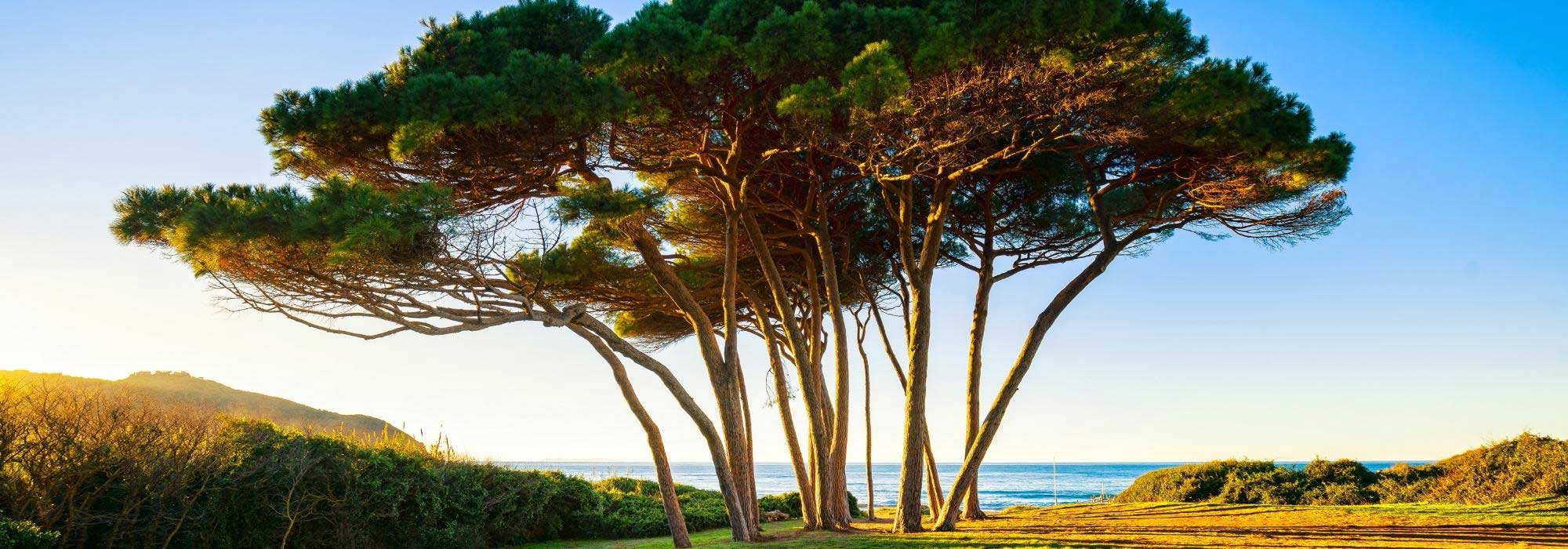
7 trees for coastal gardens
A selection of trees suited to maritime conditions
Contents
Let’s be realistic: most trees do not appreciate being buffeted by winds, scorched by salt, and lacerated by sand… When these factors are combined with sandy soil where water and nutrients are scarce, let’s be clear: they prefer to give up and wither away miserably. So YES, nature is well-designed, and evolution has considered our dear coastal gardeners. It has been working for millions of years to provide them with champions of adaptation, eager to green the seaside gardens. Are you wondering which trees to plant on the Atlantic coast, by the Mediterranean, or along the Normandy shores? To discover them, follow our advice and explore our selection of trees suited for coastal areas.
Tamaris: a cascade of pink flowers on the sand
When discussing the seaside, Tamarisks immediately come to mind. They are the first mentioned for good reason: they thrive by the sea, as this genus, which includes around a hundred species, originates from the shores and saline soils of Europe and the Mediterranean. These small deciduous trees have tiny scale-like leaves borne on slender, flexible branches. The flowering appears as graceful little pink or white plumes. Tamarisks have the unique ability to regulate their evapotranspiration by utilising the salt present in the soil. These plants are ideally suited to coastal areas, sandy soils, and drought conditions. Use tamarisks as windbreak hedges, trained on stems, or in clumps: they require no special maintenance or watering. Generally, spring and summer varieties are distinguished, all hardy beyond -15°C:
- Spring tamarisks: Tamarix parviflora and Tamarix tetrandra
- Summer tamarisks: Tamarix ramosissima ‘Pink Cascade’, Tamarix ramosissima ‘Hulsdonk White’, and Tamarix ramosissima ‘Rubra’
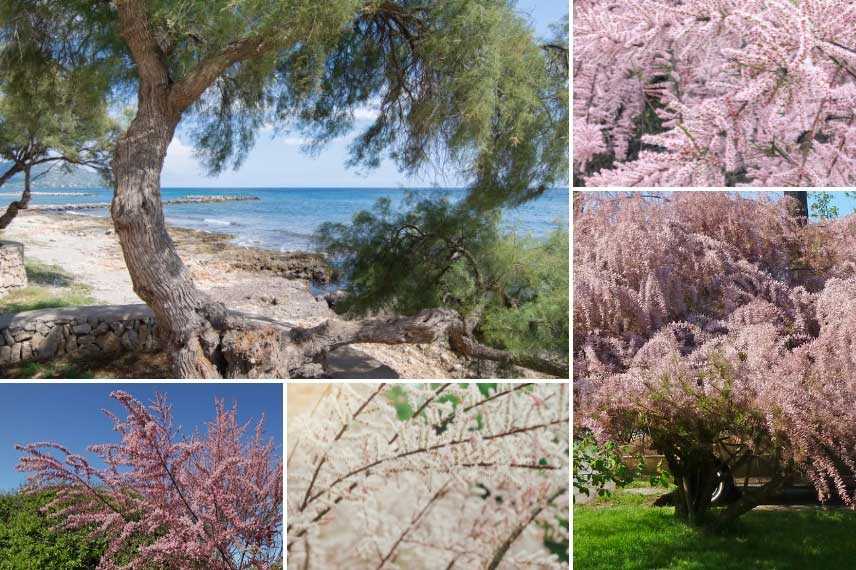
In the direction of the needles: Tamarisks by the seaside, Tamarix ramosissima ‘Pink Cascade’, Tamarix tetrandra, Tamarix ramosissima ‘Hulsdonk White’, and Tamarix parviflora
Read also
Drought-resistant treesPines: for the vast coastal spaces
For many, the atmosphere of the Atlantic or Mediterranean coast is primarily defined by pines. Among these sun-loving conifer species with significant growth, two are perfectly integrated into the coastal natural landscape, benefiting from a mild maritime or oceanic climate:
- The maritime pine Pinus pinaster: its vertical silhouette is very common along the Atlantic coastline, particularly in the Landes region. An important forest species, it grows well in stony, rather acidic soil and tolerates salt spray perfectly. Its rapid growth and large size—30 m tall with a spread of 15 m—make it suitable for large gardens.
- The umbrella pine Pinus pinea: it is the emblem of the pine forests in the south. In its juvenile stage, it boasts a beautiful rounded and dense crown that spreads as it matures, taking on its characteristic wide umbrella shape. Hardy down to -10°C, it can find its place around the Mediterranean.
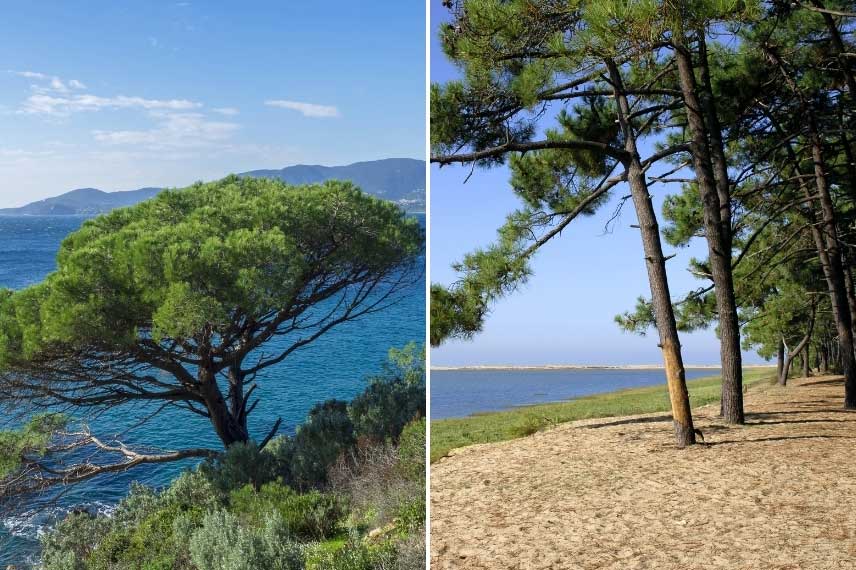
Pinus pinea and Pinus pinaster
Discover other Trees and large shrubs
View all →Available in 0 sizes
Available in 1 sizes
Available in 1 sizes
Available in 1 sizes
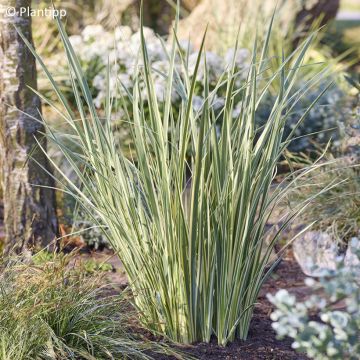
Available in 1 sizes
Available in 1 sizes
Available in 1 sizes
Available in 1 sizes
Available in 2 sizes
Available in 1 sizes
The holm oak: a resilience like no other
The Mediterranean region is the birthplace of this iconic species of oak. This evergreen tree, reaching heights of 15 to 20 m, once covered most of the Mediterranean lands, from the coastline up to 1400 m in altitude. Very accommodating, the Quercus ilex or Holm Oak, thrives in both dry atmospheres and near the sea. Slow-growing, the Holm Oak – Quercus ilex – requires very little maintenance. It is hardy down to -15°C and, provided it is planted in sunlight, it can easily withstand cold or drought. Gardeners fortunate enough to have a seaside garden can also plant it along the Atlantic coast, and why not along the coastline up north, as long as they avoid soils that retain too much moisture: good drainage should be ensured at planting.
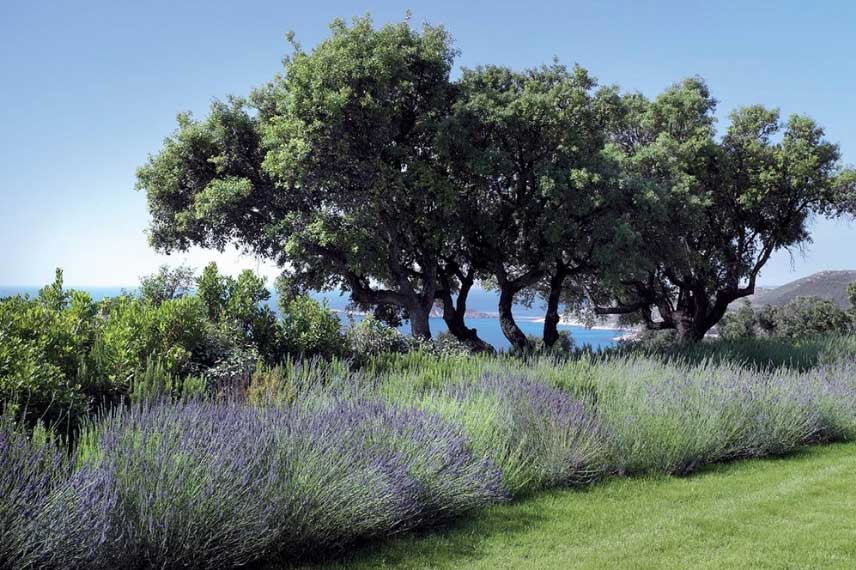
Quercus ilex in a garden overlooking the sea
Read also
7 trees for a windbreakEucalyptus gunnii: a vibrant foliage
Of the few species of Eucalyptus planted outside the Mediterranean region, Eucalyptus gunnii, also known as cider gum, is undoubtedly the most well-known. Its round, evergreen leaves with a beautiful grey hue and its spreading silhouette reaching over 15 m are easily recognisable. It is frequently found along the Atlantic coast or in Brittany. Native to Tasmania, it grows quickly and withstands winter temperatures down to -10°C. Its grey trunk peels to reveal beautiful brown and green patches. Eucalyptus trees are often among the few species of trees and bushes planted by gardeners on the front line of the coast to create tall protective hedges. They thrive in light, stony soils and tolerate drought well.
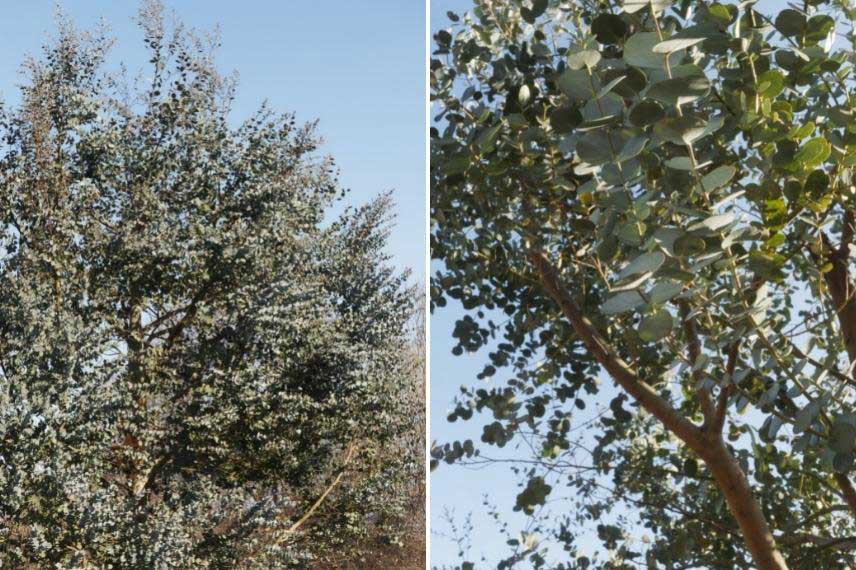
Eucalyptus gunnii
Strawberry tree: perfect for small spaces
The genus comprises around twenty species, and although strawberry trees belong to the Ericaceae family, they are not afraid of lime. Nicknamed “Strawberry Trees” due to their edible red fruits, strawberry trees are small evergreen trees with glossy leaves. The Arbutus unedo reaches an adult height of about 5 m and features very decorative wood. It produces a large quantity of white flowers in autumn, which appear at the same time as the fruits from previous years ripen. The Cyprus Strawberry Tree, Arbutus andrachne, has smooth, orange-brown bark that peels off in large strips, exposing its lovely smooth wood. It also produces fleshy reddish berries and can grow to just over 8 m in height. These species are hardy down to -10/-12°C, so they can be considered for planting along the Mediterranean coasts as well as the West coast. Strawberry trees are well-suited to well-drained, dry soils. They thrive in seaside gardens and tolerate salt as long as they are not exposed to direct sea spray. They will need a protective screen made up of first-line vegetation.
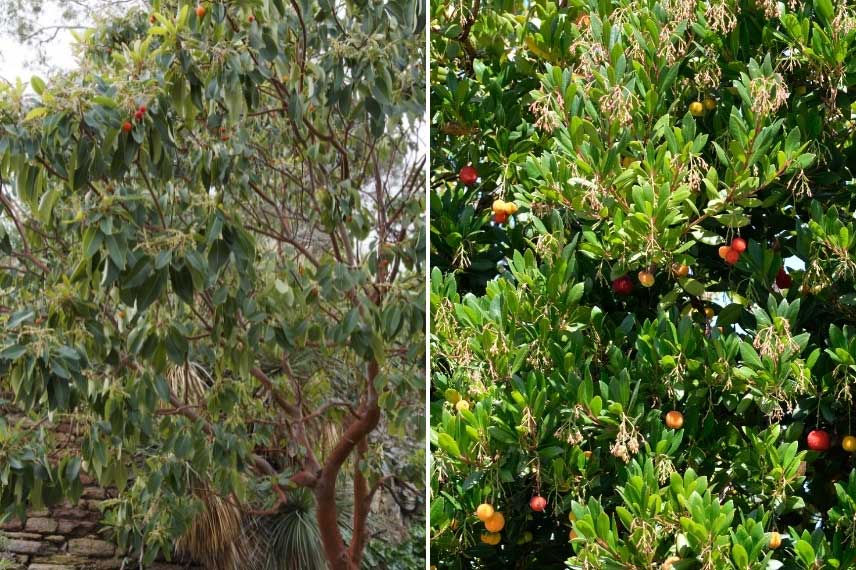
Arbutus andrachne and Arbutus unedo
Lambert's cypress: rapid growth
Cypresses are deeply associated with the image of coastal areas. These conifers easily adapt to poor, sandy soils and can be successfully planted by the sea. The Monterey cypress Cupressus macrocarpa and Cupressus macrocarpa ‘Goldcrest‘ are very useful trees for greening coastal gardens. Sea spray is not harmful to them, and Cupressus macrocarpa is hardy down to -15°C, making it perfect for colder regions. It is a majestic conifer with a pyramidal silhouette that spreads with age, featuring dense, deep green foliage. Its growth is rapid, and it will form an elegant specimen about 8 m tall and 2.5 m wide. The cultivar ‘Goldcrest’ is more tender, so it should be planted in milder climates or well-sheltered locations. Its golden foliage and conical shape also make it a great choice for coastal gardens.
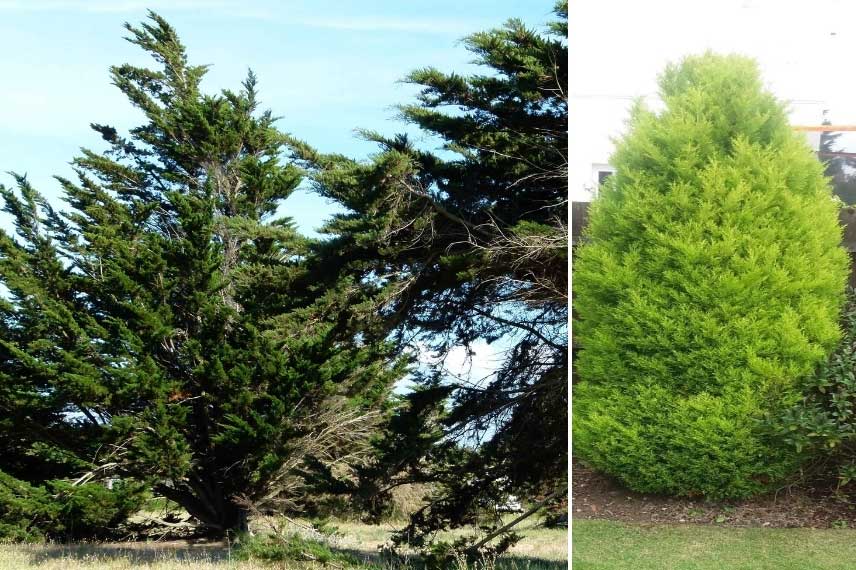
Cupressus macrocarpa and Cupressus macrocarpa ‘Goldcrest’
Palms: an alternative to trees
If palms are not trees but giant herbs biologically speaking, they can certainly play the same role in garden design due to their size and development. The Trachycarpus fortunei is particularly known for its cold resistance: it can therefore find its place in the northernmost seaside gardens, as well as in Brittany, where its large fan-shaped leaves will add height (up to 8 m) and a touch of exoticism. Similarly, the date palm Phoenix canariensis, with its long, elongated fronds, can find the same destination further south or along the Atlantic coast.
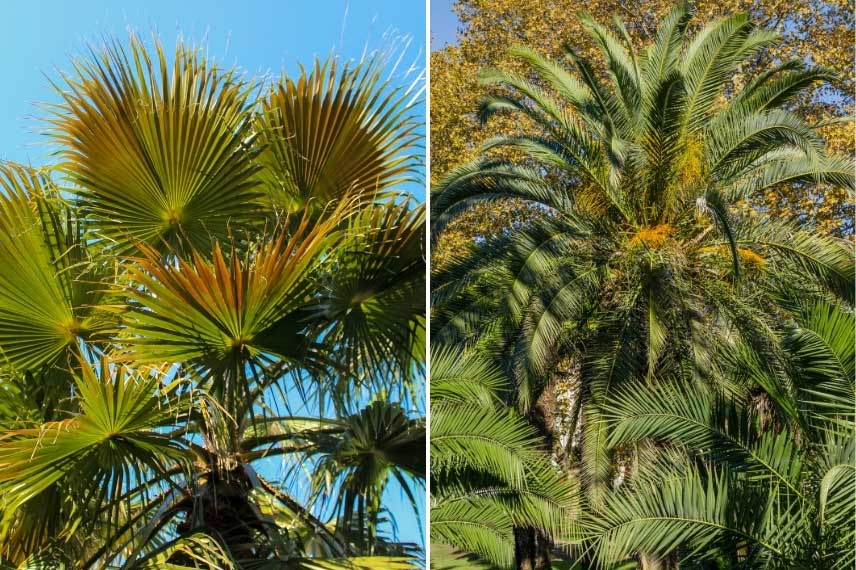
Trachycarpus fortunei and Phoenix canariensis
- Subscribe!
- Contents
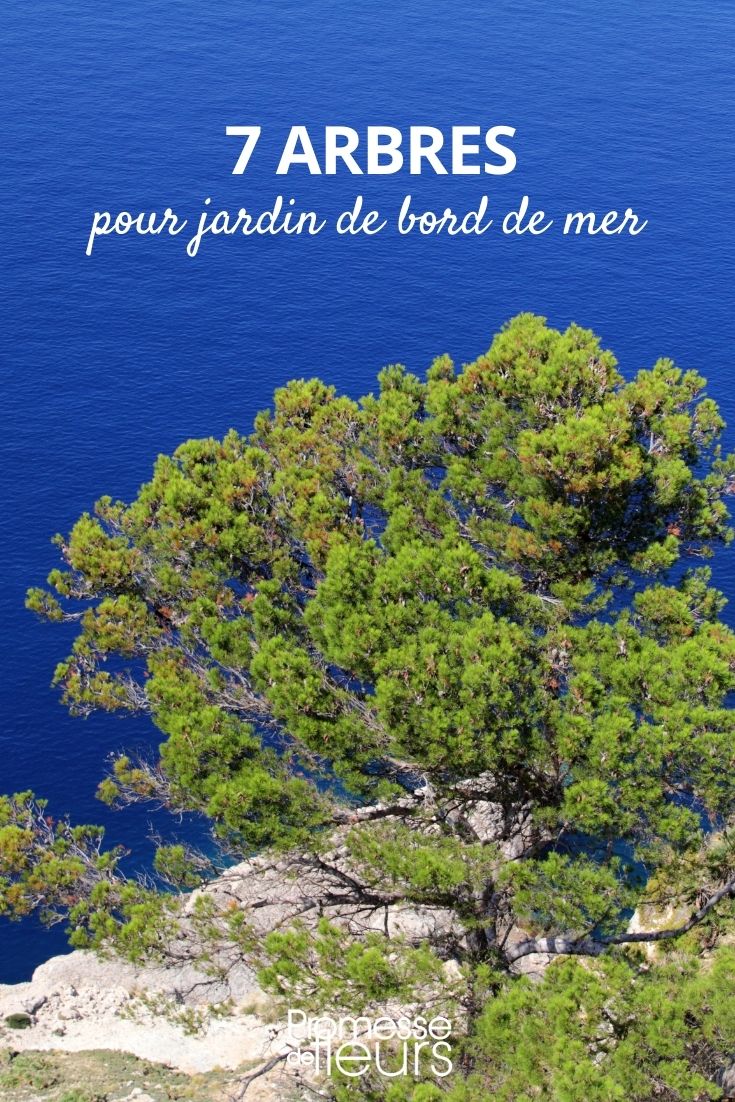
































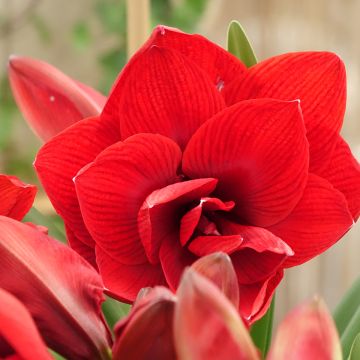


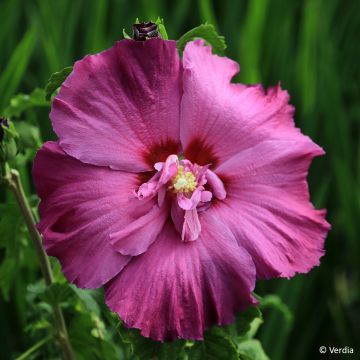

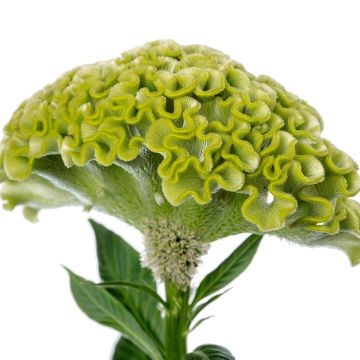


Comments